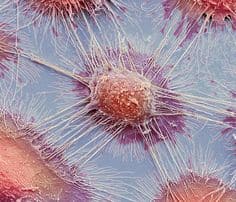How Do Dentist’s Screen For Oral Cancer?
Although, there many adjuncts for screening for oral cancer, a diligent and careful examination remains one of the most efficient ways for assessing / screening a patient for oral cancer. This however, a contentious issue as at least 1/3 of patient’s who develop oral cancer have had a screening in the last three years.

Visual examination is the principal strategy used to find patients with lesions at risk for oral carcinoma. High risk appears need to have particular attention, such as lateral margins of the tongue. To allow for consistent evaluation, the patients tongue should ideally be tongue should be held with gauge and manipulated to allow for proper visualization of all surfaces.
Scientific evidence for the treatment of potentially malignant oral mucosal lesions was recently systemically reviewed, finding that evidence based recommendations are currently lacking. Thus, it is important that oral health care professionals to undertake a thorough oral examination with sound clinical judgment, the judicious undertaking of incisional biopsies for accurate diagnosis and monitoring, meticulous record keeping including photographic records and long-term follow-up to aid paitnet with oral mucosal lesions, and referral to oral medicine specialist for expert evaluation and management of suspicious lesions. In addition, it is prudent to advise the patient of cessation of high-risk behaviour such as smoking cessation. Consider mouthwashes as well.
Adjunctive Clinical Aids
Acetic acid
– Cytoplasmic dehydrating agent.
– Atypical non-keratinised squamous epithelium cells has an increased nuclear to cytoplasmic ratio, changing their refractile properties.
– Rinsing with acetic acid solution (1% acetic acid solution for 60s) causes irregular cells to take on a whitish hue (acetic acid induce whitening), creating contrast to the surrounding tissues.
Toluidine blue (Tblue)
- Has been used to enhance the visibility of lesion with increased nuclear density, thereby highlighting areas of cell proliferation
- The presence of stain on the tissue has been thought to signify a dysplastic or malignant process
- May increase sensitivity, but suffers from high false positive (many benign and reparative processes)
- Low patient acceptance to stain the oral cavity
ViziLite (Chemiluminescent Light Detection System)
– Advocated to enhance the visualization of oral mucosa white lesions, ability to highlight malignant and potentially malignant
– Acetic acid is applied to the lesion
– blue-white light, appearing “acetowhite”. Normal healthy tissue absorbs the light and appear dark.
– When used with TBlue, the TBlue is used to differentially mark the lesions identified during ViziLite examination.
– Enhanced visualisation of white lesions.
– However, ViziLite illumination does not discriminate between keratotic, inflammatory (eg. OLP), malignant or potentially malignant white lesions. Nor distinguish epithelial hyperplasia, dysplasia, carcinoma. Also does not produce significant difference in lesion size or border distinctness of lesions.
Microlux DL
– Developed from a blue-white light emitting diode (LED) and a diffused fiber-optic light guide that generates a low-energy blue light
– Diffused blue-white light illumination of the oral cavity follows acetic acid induced whitening of oral lesions
– Useful at enhancing visibility and border distinctness of oral mucosal lesions.
– But poor at discriminating between inflammatory, traumatic, premalignant and malignant lesions.
Orascoptic DK
– Hand-held LED instrument with an oral lesion screening attachment that is used with a mild acetic acid rinse promoted to improve visualization of oral lesions.
VELscope
– Hand-held scope used to scan the mucosa for changes in tissue fluorescence.
– Tissue fluorescence: naturally occurring fluorophores gives mucosal tissues a reflective and absorptive pattern. Tissue fluorescence of the oral cavity varies depending on structural changes, metabolic activity, presence of haemoglobin in the tissue, vessel dilatation and possible inflammation.
– When exposed to blue light (400-460nm), areas undergoing neoplastic change will have a loss of fluorescence, hence producing a differential profile.
(LED) White Light
– Compared to routine incandescent operatory light, white light improves visualisation of lesions at no extra cost (cf Microlux/ DL).
– LED light (overhead/ handheld) provides more intense white light, a better field of view, and enhanced visibility and border distinctness of oral lesions.
Even with the aid of the above metioned visualisation aids, a high index of suspicion, expert clinical judgment, and biopsy are still essential for proper patient care.
If you wish for more information please do not hesitate to contact Skygate Dental today on (07) 3114 1199 or 0406 579 197.

